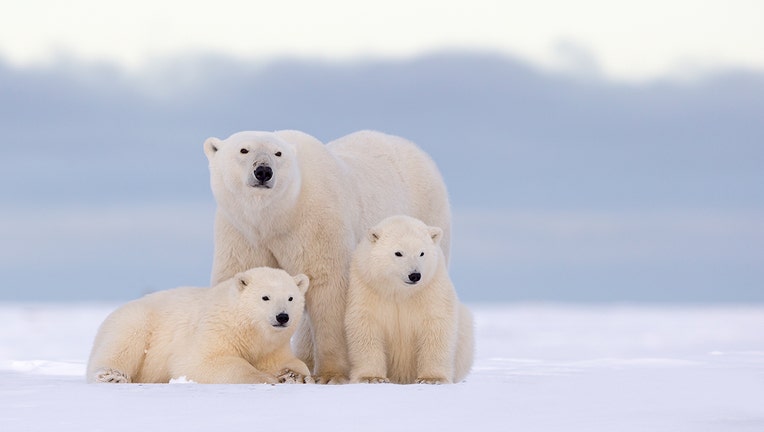Trump administration study finds climate change, oil drilling could threaten polar bears

Polar bears in Alaska
LOS ANGELES - A newly published study examining polar bear habitats in Alaska found that forthcoming large scale industrial activities could have an effect on polar bear populations — a species already fighting for survival due to climate change factors including rapid ice loss.
The study, titled “Seismic survey design and impacts to maternal polar bear dens,” highlights the endangered animals’ continual exposure to climate change, along with the impact of proposed oil drilling on the animals.
RELATED: 'Completely preserved' Ice Age cave bear found in Arctic Russia
According to the study, the Coastal Plain of the Arctic National Wildlife Refuge in northeastern Alaska is an important maternal denning area for polar bears, but recent legislation has opened the area for potential oil and gas development.
In addition, the study found that 34% of maternal polar bear dens are situated on land that has been approved by the Trump administration for industrial activities.
Researchers said the activity could ultimately disturb denning female polar bears and lead to decreased cub survival.
In the study, researchers sought to demonstrate how different seismic survey designs, with and without aerial den detection surveys, could affect denning polar bears during spring.
The team developed five hypothetical seismic survey designs for a portion of the coastal plain, ranging from no spatial restrictions on activities, to temporal restrictions and explicit consideration of when and where operations can occur. Then, the team evaluated how many dens might be disturbed by seismic surveys and the average distance that activity came in proximity to simulated polar bear dens.
RELATED: US approves oil and gas leasing plan for Alaska Wildlife refuge
The study found that survey design had a large effect on the estimated number of dens that could be disturbed. The scenario with the highest spatial and temporal specificity reduced the number of dens disturbed by more than 90% compared to the scenario with no restrictions on when and where the activity could occur.
“Our study suggests that large reductions in the probability of disturbance can occur through careful planning on the timing and distribution of proposed activities even when surveys are planned in areas with a high density of polar bear dens,” the study’s authors wrote.
The study was delayed for months by the Director of the U.S. Geological Survey (USGS) James Reilly, according to information released to the Washington Post.
According to the Post, Reilly sent an email to his staff saying the decision to delay was justified, because “he wanted to be ‘satisfied’ with its underlying science before making it public.”
Reilly, who was appointed by President Donald Trump, has faced criticism since he became director of the USGS for his treatment of climate science.
RELATED: Wildfires rage in Arctic, sea ice melts amid Siberian heatwave
In 2019, the New York Times reported that Reilly ordered that scientific assessments use “only computer-generated climate models that project the impact of climate change through 2040, rather than through the end of the century, as had been done previously.”
The change was criticized by scientists who said new reports wouldn’t provide an accurate estimate on the impact of future climate change through the 2040 timeframe.



